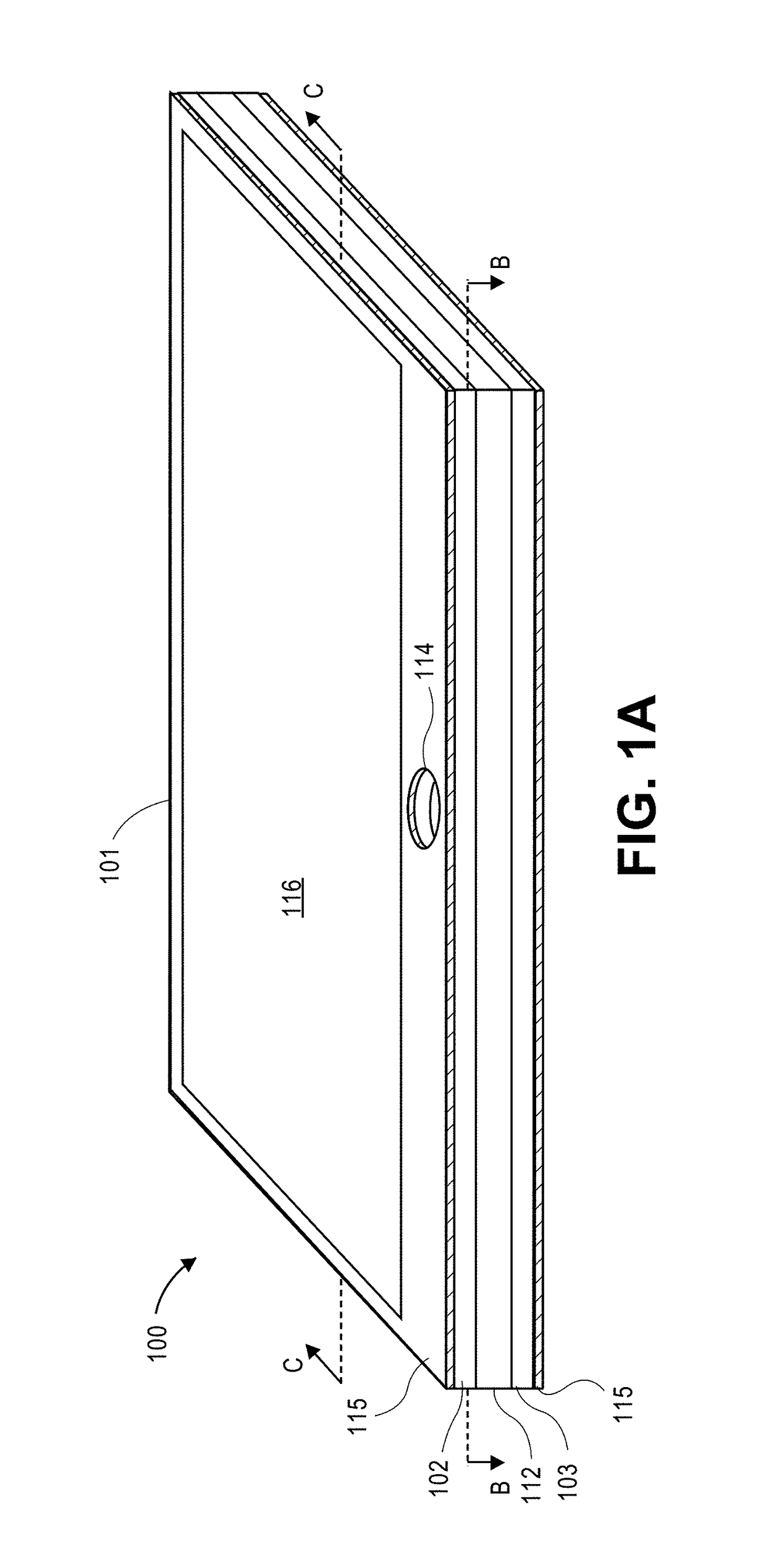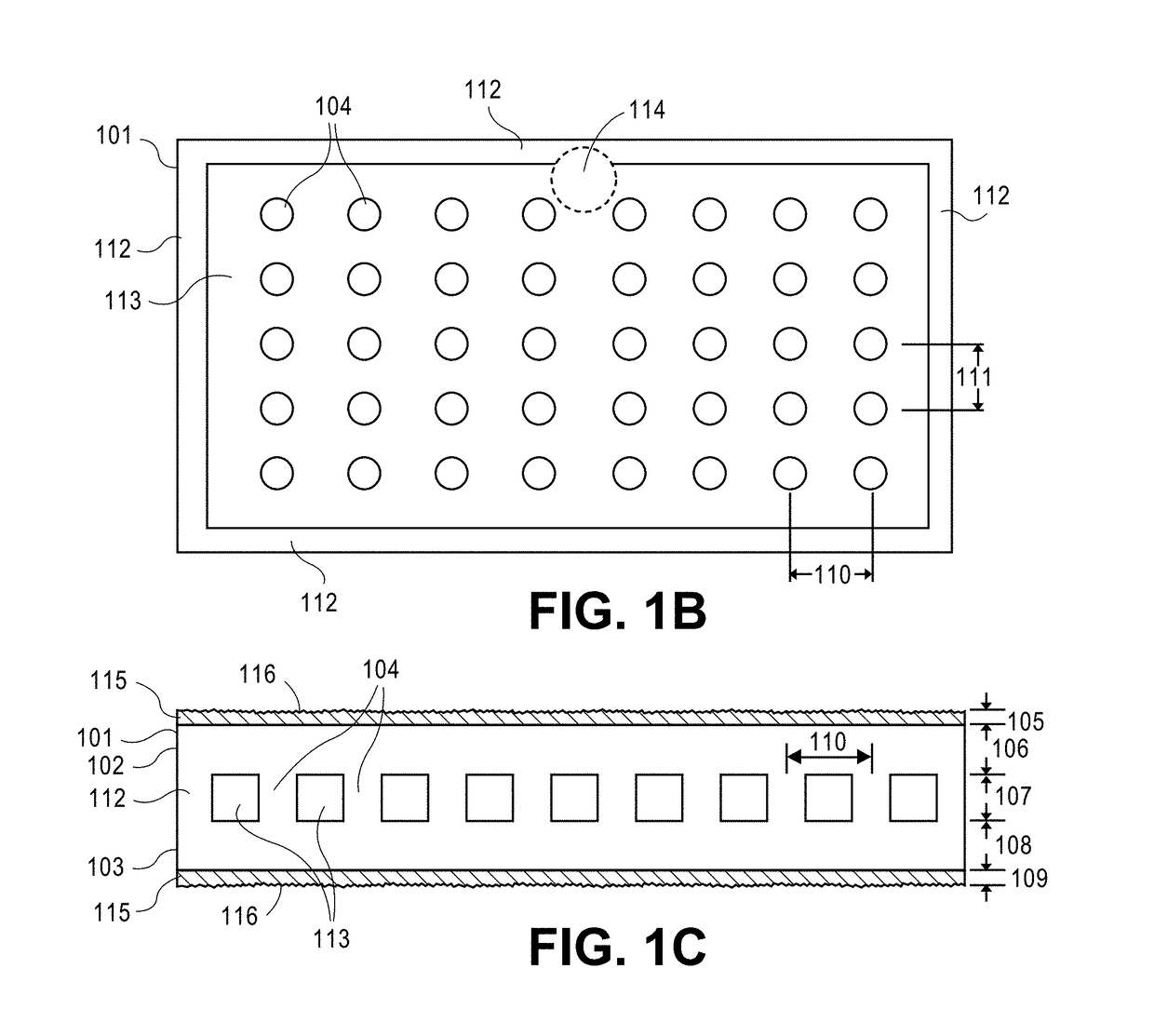Substrates for high-density cell growth and metabolite exchange
a high-density cell and metabolite technology, applied in biochemical equipment and processes, specific use bioreactors/fermenters, biomass after-treatment, etc., can solve the problem of high-density cell growth challenges, cells' metabolic demand exceeds supply from diffusion alone, and requiring additional mass transport mechanisms, etc. problem, to achieve the effect of improving cell adhesion
- Summary
- Abstract
- Description
- Claims
- Application Information
AI Technical Summary
Benefits of technology
Problems solved by technology
Method used
Image
Examples
Embodiment Construction
[0054]A culture system (e.g. box, container, other parts) capable of very high density cell culture is described. The inventors recognized that molecular oxygen (O2) is the most limiting metabolite for cell growth due to its low solubility in cell media. By separating gas convective delivery from other nutrient delivery, it is possible to significantly increase oxygen delivery to cells without increasing detrimental shear forces.
[0055]Gas perfusable, gas permeable membrane sheets, formed into bags, provide a high surface area while delivering sufficient oxygen and gas exchange for high-density cell growth. These bags can be folded or stacked to achieve high surface area to volume ratios. Cells can be grown directly on the surface of the membranes or on substrates sandwiched between the membranes.
[0056]While the use of separate membranes for oxygen delivery is useful, there are other aspects including delivery and removal of other nutrients, solutions, cells, and viruses. For example...
PUM
| Property | Measurement | Unit |
|---|---|---|
| thickness | aaaaa | aaaaa |
| thickness | aaaaa | aaaaa |
| thickness | aaaaa | aaaaa |
Abstract
Description
Claims
Application Information
 Login to View More
Login to View More - R&D
- Intellectual Property
- Life Sciences
- Materials
- Tech Scout
- Unparalleled Data Quality
- Higher Quality Content
- 60% Fewer Hallucinations
Browse by: Latest US Patents, China's latest patents, Technical Efficacy Thesaurus, Application Domain, Technology Topic, Popular Technical Reports.
© 2025 PatSnap. All rights reserved.Legal|Privacy policy|Modern Slavery Act Transparency Statement|Sitemap|About US| Contact US: help@patsnap.com



